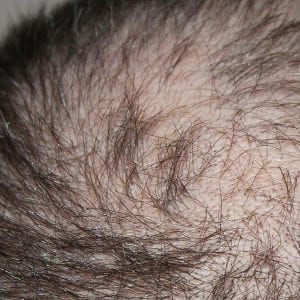There is one thing that we can’t avoid in life and no matter how hard we try, we get older. There are plenty of things that happen as we get older, but one of the most unsightly and uncomfortable aspects is unfortunately the loss of our hair. Hair loss affects people all over the world, and while most people see it as a natural part of aging, there are actually medical reasons behind excessive hair loss. There are some people who are genetically predisposed to have a “full head of hair”, but not everyone can be so lucky.
Although there are many different medical conditions that can result in hair loss, one of the most common afflictions is called Alopecia areata. This condition afflicts millions of people around the world, but it is often not diagnosed because it initially appears as simple bald spots on the scalp. For this reason, it is often referred to as spot baldness, and it resembles the natural loss of hair as people age. However, alopecia areata can develop into two different forms of the disease as well if left untreated, called Alopecia totalis (where the entire scalp becomes bald) or Alopecia universalis (where all the hair on your entire body is lost).
This condition is often associated with thyroid disorders, because the hormonal balance in the body is key to stimulating or shutting off hair follicles, and thyroid disorders throw your hormonal balance out the window! Since the condition can get worse very quickly, it is very important to treat it before it gets out of hand. Sometimes, psychological or situational factors can cause small flare-ups of alopecia and hair loss, but they can sometimes automatically regress and the hair grows back.
For longer or more serious bouts of alopecia and hair loss, the most common treatment is steroids, which stimulate the follicles that are either obstructed or non-functional. Unfortunately, those steroid treatments can have serious side effects on your hormonal system, occasionally resulting in more serious health problems, so they cannot be administered for long periods of time. For this reason, home remedies are often turned to by people who suffer from Alopecia areata. Different parts of the world use different home remedies, depending on the availability of materials and the traditional remedies already established there. Before using either home remedies or prescribed medicines, you should know for sure that you are suffering from the condition.
Symptoms Of Alopecia Areata
Some of the most common symptoms of Alopecia areata are as follows, and if you notice these, you should begin treatment as soon as possible with some of the home remedies.
Tingling area where the hair has been lost.
Uneven loss of hair, usually on one side of the scalp, happening over a short period of time.
Healthy hair near the bald patches can be pulled out easily.
Your fingernails may develop pitting.
Hair narrows as it gets closer to the scalp, resulting in an “exclamation point” appearance.
Alopecia Areata Treatment At Home — Some home remedies for Alopecia areata include lavender and other essential oils, ginkgo, milk thistle, kelp, cucumbers, potatoes, peppers, onions, green tea, henna, rosemary, Aloe Vera, licorice root, fenugreek, and Chinese hibiscus.
Home remedies are usually turned to by people who are dealing with Alopecia areata. Home remedies from different parts of the world are used by a variety of people, depending on the traditional remedies already established there and availability of materials. Before using either prescribed medicines or home remedies, you should make for sure that you are suffering from Alopecia Areata.
This is just a brief summary on Alopecia Areata Treatment At Home.






